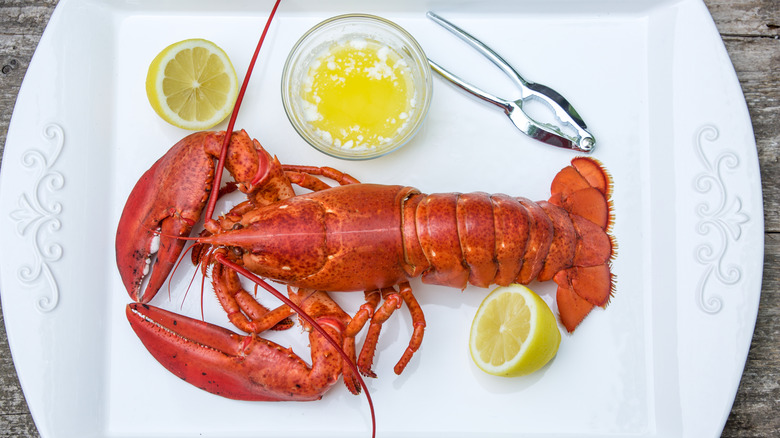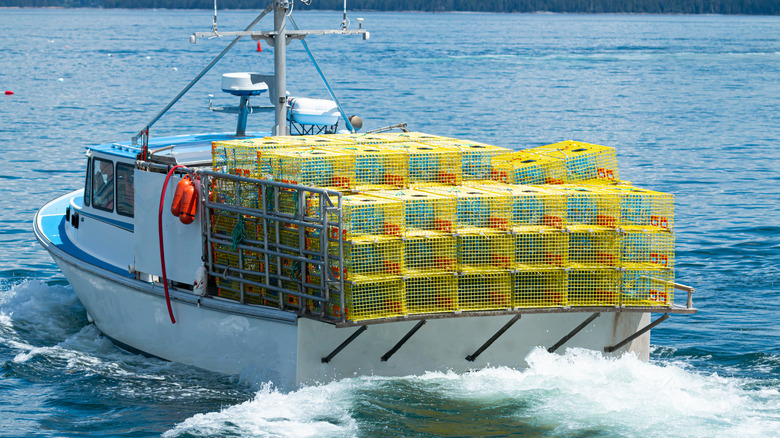What It Means For American Lobster To Be On The 'Red List'
From being served on fancy platters in white tablecloth restaurants to tossed in fast food containers to be torn into on the drive home, lobster has made its way into America's dining routine in countless ways. Some seafood lovers can't get enough of this popular shellfish, but for anyone who hasn't tried lobster, Cook Gem describes the flavor as being "sweet and succulent, with a buttery flavor and tender consistency, like crab and shrimp." However, a recent change may affect just how easy it is for some seafood lovers to secure an American lobster for their next meal.
According to AP News, the American lobster was added to the red list on Monterey Bay Aquarium's Seafood Watch program. Though combining the terms "red" and "lobster" may cause one to conjure up a seafood dinner for more than one reason, in this particular instance, for the American lobster, being categorized as red may actually mean being featured in fewer seafood dinners. The Seafood Watch program uses four colors (green, blue, yellow, and red) to denote the sustainability of seafood. Similar to traffic lights, green gives people the go-ahead because food falls under the category of "Best Choice." On the opposite end, red signifies seafood that should be avoided. How the American lobster landed on the red list has a lot to do with the safety of another sea creature.
Lobster fisheries may pose a threat to whales
Though American lobster was downgraded from a ranking of "Good Alternative" (yellow) to "Avoid" (red) by the Monterey Bay Aquarium's Seafood Watch program, it isn't the lobsters the Seafood Watch Program is concerned about. According to Seafood Watch's report, the reason behind the downgrade is that some lobster fisheries in Canada and the United States "[pose] a risk to overfished or at-risk species, including endangered North Atlantic right whales." The program explains the right whales can get tangled in the gear used with lobster traps, resulting in deadly consequences.
As its website explains, the Seafood Watch Program is a sustainable seafood movement leader relied upon by some companies to make seafood-purchasing decisions. According to AP News, there are thousands of those businesses that use Seafood Watch's advice, including Blue Apron, which stopped offering a seasonal lobster option before the downgrade was issued, and HelloFresh which also agreed to stop selling lobster.
At least one governor isn't happy with the downgrade of American lobster. Janet Mills, Governor of Maine, stated, "No right whale death has been attributed to Maine gear, and there has not been a right whale entanglement attributed to Maine lobster gear in eighteen years" (via WMTW NEWS 8 PORTLAND). Until Maine and the Seafood Watch agree on a sustainable path forward, lobster lovers looking to avoid controversy can find a list of other lobster options on the Seafood Watch Program recommendations list here.

